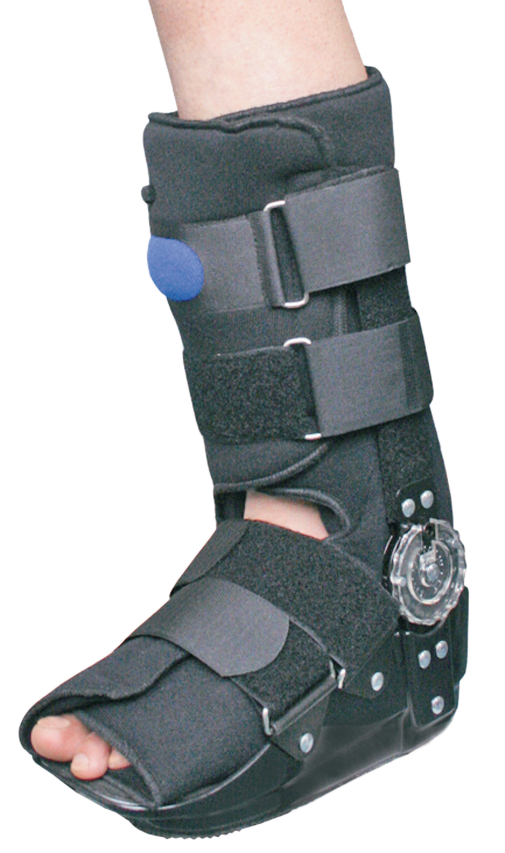
Fracture Wlaker
As the importance of catering for the unique needs of patients continues to increase, it's fair to assume that walking boots are going to be one of the fixtures - alongside wheelchairs and crutches - which hospitals and care homes can't afford to not have in stock.
(Adjustable+Air pouches)
Fit both side
Size : S, M, L, XL
A walking boot is a type of footwear that is designed to provide support and stability to the foot and ankle. Walking boots are often used by people who have suffered an injury to the foot or ankle, or who have a condition that affects the foot or ankle. Choosing the best walking boot for your needs can be a challenge. There are a few things you should keep in mind when choosing a walking boot, including the type of support you need, the fit of the boot, and the style of the boot. If you have suffered an injury to your foot or ankle, it is important to choose a boot that will provide the level of support you need. Your doctor or physiotherapist can help you determine the level of support you need. The fit of the boot is also important. The boot should be snug but not too tight. It should also be comfortable to wear for long periods of time. The style of the boot is also something to consider. Some people prefer a more traditional looking boot, while others prefer a sleek and modern design.
Walking boots are a common type of orthopedic shoe used to protect the foot and ankle. They are typically used when you have a broken bone, sprained ankle, or other injury that needs to be immobilized. Walking boots come in many different sizes, shapes, and styles, so it's important to choose the right boot for your needs. Here are some tips to help you choose the best walking boot:
1. Know Your Injury: The first step in choosing a walking boot is to know your injury. This will help you determine the level of support and protection you need. For example, if you have a broken bone, you'll need a more supportive boot than if you have a sprained ankle.
2. Choose the Right Size: Once you know your injury, you can start shopping for the right size walking boot. Be sure to try on the boot and walk around in it before you buy it. You should also make sure that the boot is comfortable and doesn't rub or chafe against your skin.
3. Consider Your Lifestyle: It's important to consider your lifestyle when choosing a walking boot. If you're an active person who enjoys hiking or running, you'll need a different boot than someone who is mostly sedentary. Consider how often you'll be wearing the boot and what activities you'll be doing while wearing it.
4. Check the Warranty: Before you purchase a walking boot, be sure to check the warranty. This will ensure that you're covered in case the boot breaks or doesn't meet your expectations.
5. Ask Your Doctor: If you're still unsure about which walking boot to choose, ask your doctor or orthopedic specialist for help. They can provide you with expert advice and guidance to ensure that you select the best boot for your needs.
If you have an injury, you'll likely be asked to wear a walker boot at some point during your recovery. A walker boot is a type of medical device that helps to stabilize the foot and ankle while you heal. Here are some tips on how to choose the best walking boot for your needs and how to care for it. When choosing a walking boot, make sure to get one that's the right size. It should be snug but not too tight, and you should be able to wiggle your toes. You'll also need to decide whether you want a tall boot or a short boot. Tall boots go up to the knee and provide more support, while short boots only go up to the ankle. Once you have your boot, it's important to take care of it. Follow the instructions from your doctor or physical therapist on how often to change out the liner and when to clean the boot. It's also important to break in your boot gradually. Start by wearing it for just an hour or two each day, then slowly increase the amount of time you wear it each day until you're wearing it all day. With proper care, your walking boot will help you heal quickly and comfortably.
There are a few alternatives to using a walking boot when you have an injury. You could use crutches, which would take the weight off of your foot, but they can be difficult to maneuver. A knee scooter is a good option if you can't use crutches, as it will allow you to move around without putting any weight on your foot. If your injury is not too severe, you could also try using an ankle brace or tape.